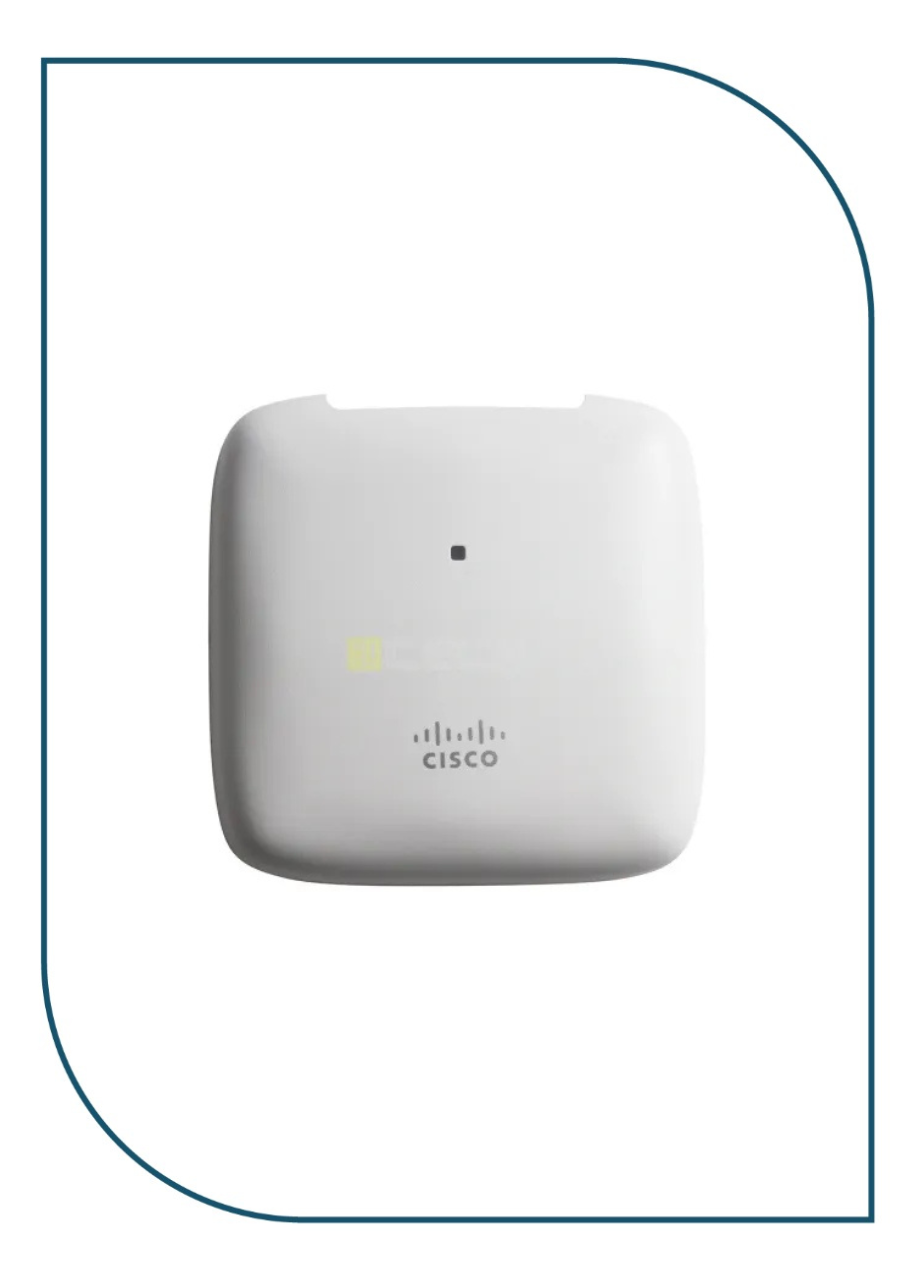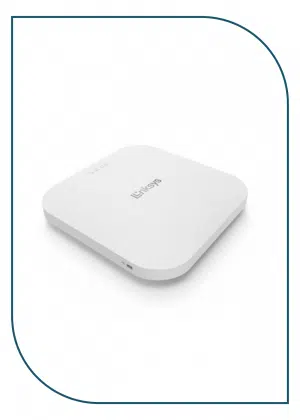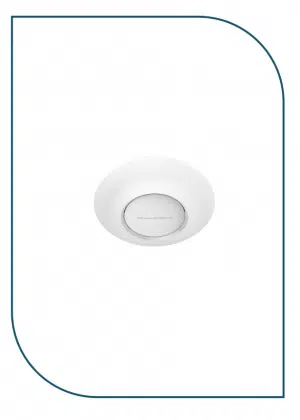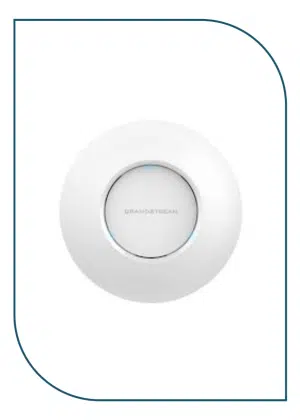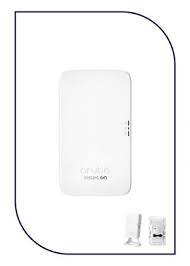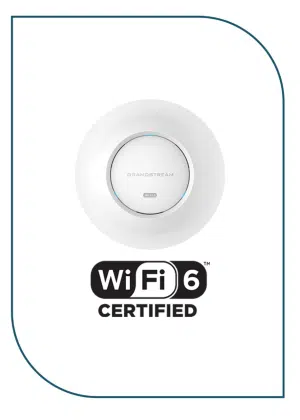Description
CBW240AC-I
|
Item |
Specification |
|
|
Authentication and security |
● Wi-Fi Protected Access 2 (WPA2 ); WPA3 is coming in a future release
● 802.1X, Remote Authentication Dial-In User Service (RADIUS); Authentication, Authorization, and Accounting (AAA)
● Segmentation via VLANs (up to 16)
● 802.11r and 802.11i
● Guest network can also authenticate against: Google and Facebook
|
|
|
Maximum clients |
● Maximum number of associated wireless clients: 200 per Wi-Fi radio, in total 400 clients per access point, or 1000 in a system
|
|
|
Maximum # of access points |
● 50
● Recommended up to 25
|
|
|
Ma Max # of mesh extenders |
● Maximum number of associated Cisco Business mesh extenders: 25 per access point, up to 8 hops
|
|
|
802.11ac |
● 4×4 Downlink (DL) MU-MIMO with four spatial streams, up to 1733 Mbps
● 802.11ac beamforming
● 20, 40, 80 MHz channels
● Dynamic Frequency Selection (DFS)
|
|
|
Integrated antenna |
● 2.4 GHz, peak gain 4 dBi, internal antenna, omnidirectional
● 5 GHz, peak gain 5 dBi, internal antenna, omnidirectional
|
|
|
Ethernet ports |
● Authentication with 802.1X or MAC filtered
● Dynamic VLAN or per port
|
|
|
Interfaces |
● 2 x Gigabit (10/100/1000BASE-T autosensing), Power over Ethernet (PoE)
● RJ-45 console port (not functional)
● USB 2.0 (not functional)
|
|
|
Indicators |
● Status LED indicates boot loader status, association status, operating status, boot loader warnings, boot loader errors
|
|
|
● Access point (without mounting brackets): 7 x 7 x 1.5 in
|
||
|
Weight |
● 0.94 lb (0.43 kg)
|
|
|
Powering options |
● 802.3af/at Ethernet switch, a Cisco Business Switch with PoE is recommended
● Optional Cisco Business Power over Ethernet injector (CB-PWRINJ-xx)
|
|
|
Power draw |
● 13.2W
|
|
|
Environmental |
● Nonoperating (storage) temperature: —22° to 158°F (—30° to 70°C)
● Nonoperating (storage) altitude test: 25˚C, 15,000 ft
● Operating temperature: 32° to 122°F (0° to 50°C)
● Operating humidity: 10% to 90% (noncondensing)
● Operating altitude test: 40˚C, 9843 ft
|
|
|
Note: When ambient operating temperature exceeds 40°C, then the radio transmit duty cycle may be limited to not greater than 50%. |
||
|
System memory |
1GB MB DRAM, 256 MB flash |
|
|
Warranty |
Cisco Business Limited lifetime hardware warranty Free software updates, no service contract required |
|
|
Available transmit power settings3 |
2.4 GHz ● Up to 20 dBm
|
5 GHz ● Up to 23 dBm
|
|
Frequency band and 20-MHz operating channels |
A (A regulatory domain): ● 2.412 to 2.462 GHz; 11 channels
● 5.180 to 5.320 GHz; 8 channels
● 5.500 to 5.700 GHz; 8 channels (excludes 5.600 to 5.640 GHz)
● 5.745 to 5.825 GHz; 5 channels
B (B regulatory domain): ● 2.412 to 2.462 GHz; 11 channels
● 5.180 to 5.320 GHz; 8 channels
● 5.500 to 5.700 GHz; 11 channels
● 5.745 to 5.865 GHz; 7 channels
C (C regulatory domain): ● 2.412 to 2.472 GHz; 13 channels
● 5.745 to 5.825 GHz; 5 channels
D (D regulatory domain): ● 2.412 to 2.462 GHz; 11 channels
● 5.180 to 5.320 GHz; 8 channels
● 5.745 to 5.825 GHz; 5 channels
E (E regulatory domain): ● 2.412 to 2.472 GHz; 13 channels
● 5.180 to 5.320 GHz; 8 channels
● 5.500 to 5.700 GHz; 8 channels (excludes 5.600 to 5.640 GHz)
F (F regulatory domain): ● 2.412 to 2.472 GHz; 13 channels
● 5.745 to 5.805 GHz; 4 channels
G (G regulatory domain): ● 2.412 to 2.472 GHz; 13 channels
● 5.745 to 5.865 GHz; 7 channels
H (H regulatory domain): ● 2.412 to 2.472 GHz; 13 channels
● 5.180 to 5.320 GHz; 8 channels
● 5.745 to 5.825 GHz; 5 channels
|
I (I regulatory domain): ● 2.412 to 2.472 GHz; 13 channels
● 5.180 to 5.320 GHz; 8 channels
K (K regulatory domain): ● 2.412 to 2.472 GHz; 13 channels
● 5.180 to 5.320 GHz; 8 channels
● 5.500 to 5.620 GHz; 7 channels
● 5.745 to 5.805 GHz; 4 channels
N (N regulatory domain): ● 2.412 to 2.462 GHz; 11 channels
● 5.180 to 5.320 GHz; 8 channels
● 5.745 to 5.825 GHz; 5 channels
Q (Q regulatory domain): ● 2.412 to 2.472 GHz; 13 channels
● 5.180 to 5.320 GHz; 8 channels
● 5.500 to 5.700 GHz; 11 channels
R (R regulatory domain): ● 2.412 to 2.472 GHz; 13 channels
● 5.180 to 5.320 GHz; 8 channels
● 5.660 to 5,825 GHz; 8 channels (excludes 5.700 to 5.745 GHz)
S (S regulatory domain): ● 2.412 to 2.472 GHz; 13 channels
● 5.180 to 5.320 GHz; 8 channels
● 5.500 to 5.700 GHz; 11 channels
● 5.745 to 5.825 GHz; 5 channels
T (T regulatory domain): ● 2.412 to 2.462 GHz; 11 channels
● 5.180 to 5.320 GHz; 3 channels
● 5.500 to 5.700 GHz; 12 channels
● 5.745 to 5.825 GHz; 5 channels
Z (Z regulatory domain): ● 2.412 to 2.462 GHz; 11 channels
● 5.180 to 5.320 GHz; 8 channels
● 5.500 to 5.700 GHz; 8 channels (excludes 5.600 to 5.640 GHz)
● 5.745 to 5.825 GHz; 5 channels
|
|
Note: Customers are responsible for verifying approval for use in their individual countries. To verify approval and to identify the regulatory domain that corresponds to a particular country, visit https://www.cisco.com/go/aironet/compliance. |
||
|
Maximum number of nonoverlapping channels |
2.4 GHz ● 802.11b/g:
◦ 20 MHz: 3 ● 802.11n:
◦ 20 MHz: 3 |
5 GHz ● 802.11a:
◦ 20 MHz: 26 FCC, 16 EU ● 802.11n:
◦ 20 MHz: 26 FCC, 16 EU ◦ 40 MHz: 12 FCC, 7 EU ● 802.11ac:
◦ 20 MHz: 26 FCC, 16 EU ◦ 40 MHz: 12 FCC, 7 EU ◦ 80 MHz: 5 FCC, 3 EU |
|
Note: This varies by regulatory domain. Refer to the product documentation for specific details for each regulatory domain. |
||
|
Compliance standards |
● Safety:
◦ IEC 60950-1 ◦ EN 60950-1 ◦ AS/NZS 60950.1 ◦ UL 60950-1 ◦ CAN/CSA-C22.2 No. 60950-1 ◦ UL 2043 ◦ Class III Equipment ● EMC/EMI:
Emissions: ◦ CISPR 32 (rev. 2015) ◦ EN 55032 (rev. 2012/AC:2013) ◦ EN 55032 (rev. 2015) ◦ EN61000-3-2 (rev. 2014) ◦ EN61000-3-3 (rev. 2013) ◦ KN61000-3-2 ◦ KN61000-3-3 ◦ AS/NZS CISPR 32 Class B (rev. 2015) ◦ 47 CFR FCC Part 15B ◦ ICES-003 (rev. 2016 Issue 6, Class B) ◦ VCCI (V3) ◦ CNS (rev. 13438) ◦ KN-32 ◦ TCVN 7189 (rev. 2009) Immunity: ◦ CISPR 24 (rev. 2010) ◦ EN 55024 / EN 55035 (rev. 2010) Emissions and Immunity: ◦ EN 301 489-1 (v2.1.1 2017-02) ◦ EN 301 489-17 (v3.1.1 2017-02) ◦ QCVN (18:2014) ◦ KN 489-1 ◦ KN 489-17 ◦ EN 60601 (1-1:2015) ● Radio:
◦ EN 300 328 (v2.1.1) ◦ EN 301 893 (v2.1.1) ◦ AS/NZS 4268 (rev. 2017) ◦ 47 CFR FCC Part 15C, 15.247, 15.407 ◦ RSP-100 ◦ RSS-GEN ◦ RSS-247 ◦ China regulations: State Radio Regulation of China (SRRC) ◦ LP0002 (rev 2018.1.10) ◦ Japan Std. 33a, Std. 66, and Std. 71 ● RF Safety:
◦ EN 50385 (rev. Aug 2002) ◦ Australian Radiation Protection and Nuclear Safety Agency (ARPANSA) ◦ AS/NZS 2772 (rev. 2016) ◦ EN 62209-1 (rev. 2016) ◦ EN 62209-2 (rev. 2010) ◦ 47 CFR Part 1.1310 and 2.1091 ◦ RSS-102 ● IEEE standards:
◦ IEEE 802.3 ◦ IEEE 802.3ab ◦ IEEE 802.3af/at ◦ IEEE 802.11 a/b/g/n/ac ◦ IEEE 802.11h, 802.11d ● Energy efficiency:
◦ Reg. 278/2009 EuP Lot 7, Tier 1 4/27/2010, Tier 2 4/27/2010 Level V ◦ Reg. 1275/2008 EuP Lot 6, Tier 1 1/7/2010, Tier 2 4/27/2013. Applies to EMC Class B products ◦ EISA 2007, Level V ◦ NRCan Level V ◦ AS/NZS 4665.2, MEPS Level V ◦ China Energy Conservation Program (CECP) Level V ● Security:
◦ 802.11i, Wi-Fi Protected Access 2 (WPA2), WAP3 (future), WPA ◦ 802.1X ◦ Advanced Encryption Standards (AES) ● Extensible Authentication Protocol (EAP) types:
◦ EAP-Transport Layer Security (TLS) ◦ EAP-Tunneled TLS (TTLS) or Microsoft Challenge Handshake Authentication Protocol Version 2 (MSCHAPv2) ◦ Protected EAP (PEAP) v0 or EAP-MSCHAPv2 ◦ EAP-Flexible Authentication via Secure Tunneling (EAP-FAST) ◦ PEAP v1 or EAP-Generic Token Card (GTC) ◦ EAP-Subscriber Identity Module (SIM) |
|
|
Data rates supported |
802.11b: 1, 2, 5.5, and 11 Mbps |
|
|
802.11a/g: 6, 9, 12, 18, 24, 36, 48, and 54 Mbps |
||
|
802.11n data rates on 2.4 GHz and 5GHz: 6.5 to 600Mbps (only 20 MHz and MCS 0 to MCS 15) |
||
|
802.11ac data rates (5 GHz): 6.5 to 1733Mbps (MCS0-MCS9) |
||




